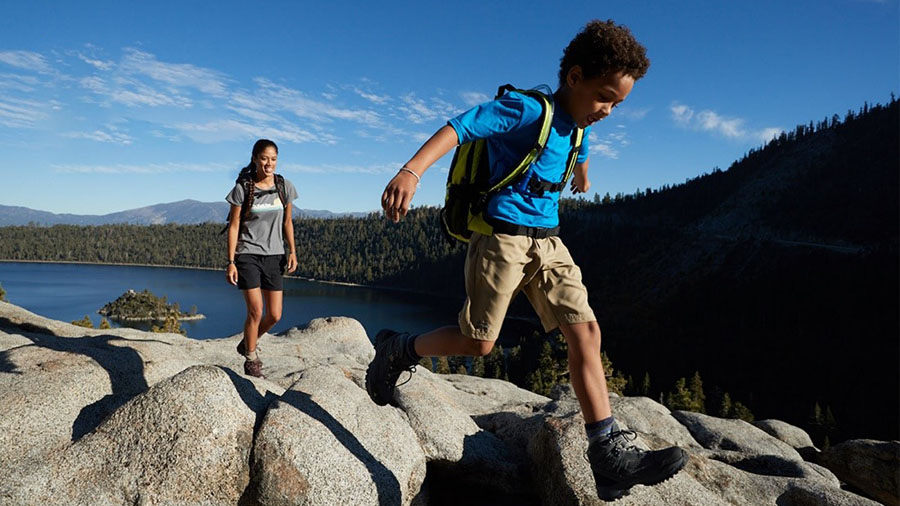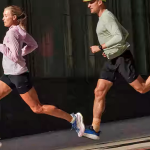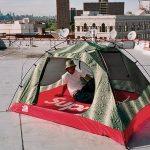Dick’s Sporting Goods reported first-quarter earnings that topped analyst expectations on healthy sales growth while reiterating its outlook for the year. Officials told analysts it hadn’t seen any pullback in spending due to inflationary or macro-pressures that other retailers have felt, from Walmart to Foot Locker.
“While consumers face macroeconomic uncertainties, our athletes [customers] have continued to prioritize sports and rely on Dick’s to meet their needs,” said Lauren Hobart, president and CEO, on a quarterly call. “In fact, compared to the same period last year, more athletes purchased from us, they purchased more frequently, and they spent more each trip. Our strategies are working and resonating with our athletes.”
In the Q&A session, Hobart added that Dick’s sees growth across all income demographics from lower to higher income levels. She said, “We did not see a trade down from best to better or better to good. Overall, we feel very good about how our consumers are holding up to now.”
She added Dick’s “pandemic-surging categories,” citing bikes, fitness and golf, have retrenched from pandemic peaks but are “well above where they were in 2019.” However, the market share gains are driven by core categories—footwear, team sports and apparel—with strength from entry-level to premium price points.
Hobart said, “Consumers are opting to spend their money on whatever is important to them. So, for example, we have brought in the upper echelon of soccer cleats and other equipment into our stores and people are absolutely voting with their pocketbooks for those items. At the same time, we always have entry-level product. So, we do not see a major resistance to big-ticket items. We see that people are opting to invest in the things that are important to them, and health and wellness, team sports, and being outside are part of those categories that are important to them.”
In the first quarter ended April 29, sales rose 5.3 percent to $2.84 billion, exceeding Wall Street’s consensus target of $2.8 billion.
Comparable store sales grew 3.4 percent and benefited from improved inventory levels against the year-ago period. The comp gains were driven by a 2.7 percent increase in transactions and 0.7 percent increase in the average ticket.
“Our compelling spring assortment allowed us to meet robust demand and deliver a fantastic athlete experience,” said Hobart. “We continue to gain market share and saw increases in both transactions and average ticket with strong transaction growth driving most of our comp gains.”
Navdeep Gupta, EVP and CFO, added, “Our priority categories continue to perform very well, driven by a differentiated assortment across footwear, athletic apparel, and team sports.”
Same-store sales fell 8.4 percent in the 2022 first quarter, partly due to lean inventory levels caused by supply chain disruption and difficult comparisons against a comp surge of 117 percent in the 2021 first quarter as stores reopened during the pandemic.
Gupta said the approximately 200 basis points of non-comp sales growth in the quarter was driven by sales at its temporary warehouse sale locations and from the acquisition of the Moosejaw outdoor retail business from Walmart. The Moosejaw acquisition closed in March.
Net earnings in the quarter improved 16.9 percent to $305.0 million, or $3.40 a share, from $261 million, or $2.47, a year ago, topping analysts’ consensus estimate of $3.18.
Shares of Dick’s closed at $124.58, down $1.82, or 1.44 percent, Tuesday on the New York Stock Exchange.
Gross margins were 36.2 percent, down 28 basis points year over year. The drop was better than the decline of 110 basis points, on average, expected by Wall Street.
The margin decline was driven by a lower merchandise margin of 136 basis points due to the normalization of promotional activity relative to Q122, when inventory levels were “quite clean,” said Gupta. Lower supply chain costs benefited margins by 108 basis points.
SG&A expenses grew 12.8 percent to $693.9 million due to investments in hourly wage rates, talent and technology to support its growth strategy. As a percent of sales, SG&A expenses reached 24.4 percent, down 162 basis points. Nearly a quarter of the deleverage reflected higher expenses from a change in the investment value of its deferred compensation plan that was fully offset by other income.
Interest expense was $15 million, a decrease of $10.6 million compared to the same period last year due to the exchange of convertible senior notes incurred in the prior year and interest expense savings in the current quarter.
Other income totaled $17.7 million compared to expenses of $9 million in the same period last year, as interest income increased due to higher average interest rates on cash and cash equivalents. Other income also included an expense reduction from changes in the retailer’s deferred compensation plans, which fully offset the related SG&A expense increase.
EBT (Earnings Before Taxes) dipped 1.1 percent to $328.3 million, or 11.55 percent of sales, from $331.9 million, or 12.29 percent, in 2022 as the improving sales, interest expenses and other income were offset by the higher operating costs and slightly higher gross margin.
A lower tax rate tied to the vesting of employee equity awards and exercises during the quarter led to the increase in year-over-year earnings.
Inventories were up 7 percent at quarter-end to $3.03 billion. Gupta said, “Our inventory is clean and well-positioned.”
For the current year, Dick’s reiterated its outlook that calls for comparable store sales to be in the range of flat to positive 2 percent. EPS is still expected in the range of $12.90 to $13.80, up 11 percent at the midpoint versus 2022.
Dick’s expects stronger comps in the first half of the year as the second half faces tougher comparisons against a year-ago comp gain of 6 percent. Gross margins are expected to improve sequentially throughout the year as comparisons become easier against the return of promotions in year-ago quarters.
The full year is expected to include about $100 million in sales from Moosejaw in the little over 10-month ownership timeframe of the outdoor business.
Hobart highlighted progress on DKS’ four key growth priorities:
- Innovating within the athlete experience;
- Creating a compelling and differentiated product assortment;
- Providing a best-in-class teammate experience; and
- Driving deep engagement with the Dick’s brand.
Regarding innovating around the athlete experience, she called out the success of its House of Sport concept store, which is expected to be the primary driver of square footage growth. She said, “House of Sport is fostering very strong engagement with both our athletes and our brand partners, all while delivering much higher sales and profit.”
Dick’s said it is on track to open nine House Of Sport stores this year ahead of the back-to-school season and has begun the construction of over ten additional locations to open in 2024. Dick’s goal is to open between 75 to 100 House of Sports stores by the end of 2027.
The company has also opened its first “next-generation” Dick’s banner in its traditional 50,000-square-foot format inspired by House Of Sport learnings. Said Hobart, “This prototype is a great representation of key athlete insights that we’ve gained from House Of Sport, including premium experiences, an elevated service model and enhanced visual expressions. Our first location opened last week in South Bend, IN. We are excited about this opportunity and look forward to continuing to develop and learn from this new store format.”
Recent enhancements to its online business that customers have well-received include easier access to Scorecard Rewards, upcoming launches through a sneaker release calendar, in-app reservation capabilities, and product scanning via Dick’s app.
Hobart also cited the continued benefits Dick’s sees from its GameChanger platform, a mobile app and website providing scorekeeping, stats, video streaming, and game recaps across youth sports. Hobart said, “During Q1, GameChanger saw continued robust revenue growth and massive engagement increases. Nearly two million games were played on the network covered by the platform, up 25 percent over the same period last year, with over a quarter of these games streamed live, a year-over-year increase of over 100 percent. We’ll continue innovating and investing in our GameChanger business as we strengthen our relationships with our athletes on and off the field.”
Hobart also touted the success of Dick’s value chain stores, Warehouse Sale and Going, Going, Gone!, reaching the retailer’s value-conscious customers and helping optimize inventory. Hobart said, “They allow us to move clearance products out of Dick’s stores, opening up space for more full-price selling. At the same time, they allow us to provide full-size and color runs clearance products for our athletes. We’ve been pleased with the athlete feedback and the margin recapture rates from these stores.”
In merchandising, Hobart said footwear remained “a key pillar of our merchandising strategy,” with 20 more doors converted to add premium footwear decks in the first quarter, which are expected to reach 75 percent of Dick’s locations by year-end. Said Hobart,” Our premium footwear decks have enabled us to expand our access to a wider assortment of differentiated products from key brand partners as well as new and emerging brands. We’re confident that our ability to provide an elevated footwear experience will continue to foster strong engagement with our athletes, as well as drive sales growth and robust margins.”
Hobart said Dick’s also remains committed to developing and investing in its vertical brands or its private brands. Said Hobart, “Our brands offer something for every athlete, including our DSG brand, which continues to play a pivotal role in our opening price point assortment. We’ve also recently expanded our vertical brands into new product categories, including VRST and Calia golf apparel, as well as Calia fitness accessories. The athlete response has been fantastic, and we’re confident in our ability to continue growing our vertical brand’s portfolio.”
To support its employee base and elevate the in-store experience, Dick’s invested in the in-store experience to enable greater efficiency and productivity, including a new POS system with a seamless checkout process. A new HR management system was also implemented to drive efficiencies. Hobart said, “We’re confident these investments will amplify our team’s ability to provide an enhanced level of service to our athletes while supporting our strong culture.”
Hobart said “highly engaged teammates are critical” to the in-store experience and called Dick’s culture “a key advantage” as the retailer continues to land on “Best Places To Work” rankings.
Finally, to drive deep brand engagement, Dick’s recently launched the Sports Change Lives campaign celebrating the company’s 75th anniversary. Hobart said, “Our objective with this work is to unequivocally communicate who we are and what we stand for. Dick’s believes in the positive impact that sports participation has on physical and mental health, academic achievement, and, more broadly, the ability of sport to bring together and inspire communities and the next generation of athletes. The feedback has been very positive, and it’s clear our message is resonating.”
A second iteration of the company will be introduced in early June, focusing on telling stories from several well-known athletes about how sports has changed their lives. The Dick’s Foundation is also making $75,000 in grants to 75 youth sports organizations as part of its anniversary campaign.
Hobart concluded, “In closing, our strong Q1 performance is the direct result of our transformational journey, and we will continue to focus on athlete experience, differentiated product, teammate experience and brand engagement as the pillars of growth for our business. While the macro-economic environment remains uncertain, we remain confident in our business and the strategies that will deliver sales and earnings growth this year and into the future.”
Photo courtesy DKS
















